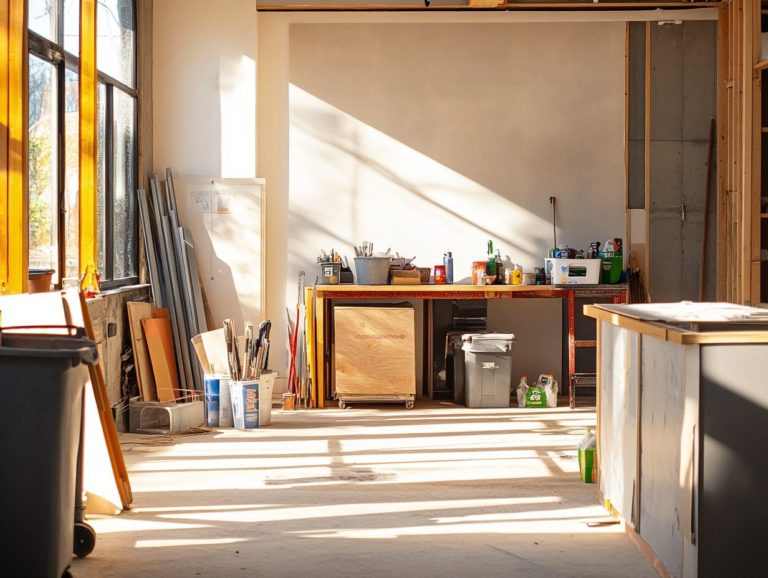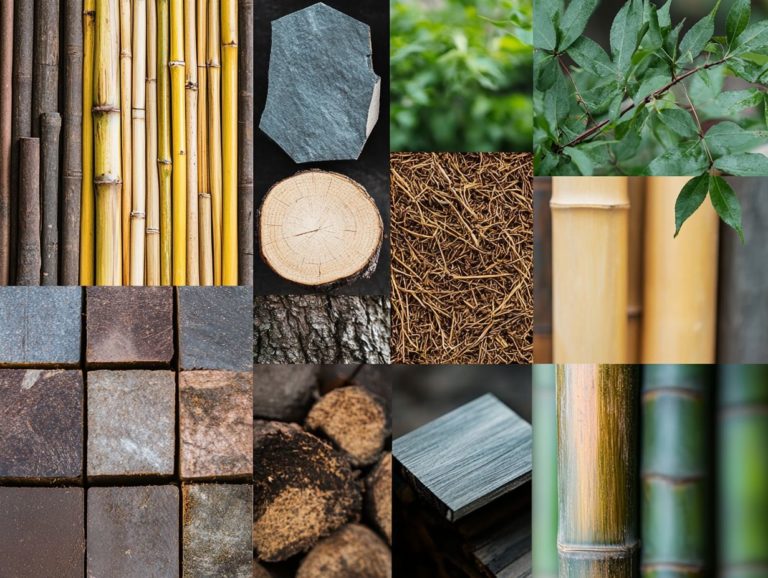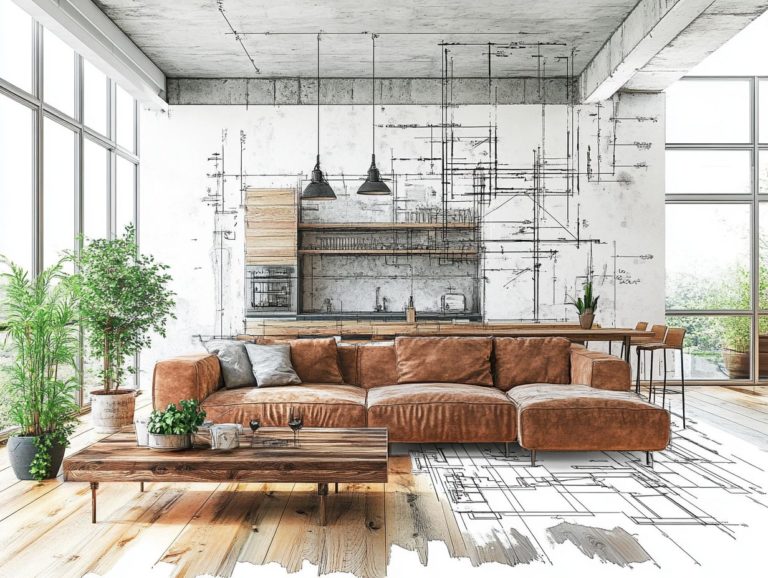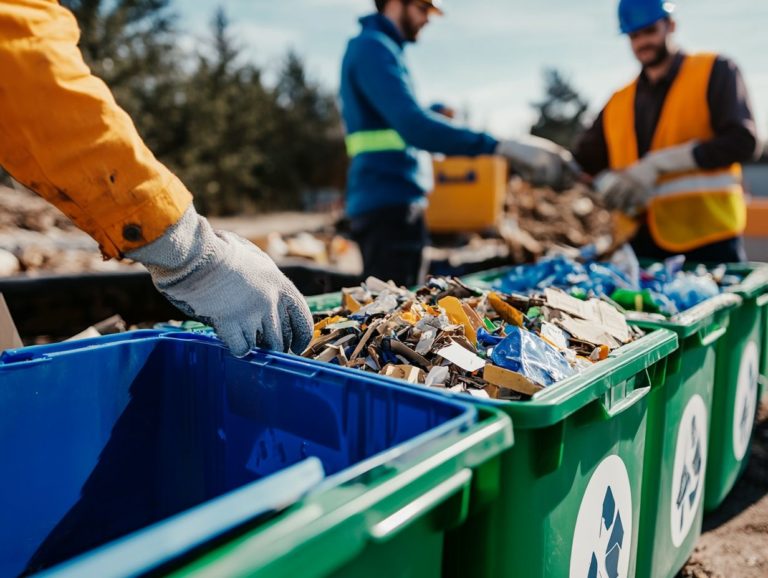Innovative Uses for Salvaged Materials in Homes
In a world that increasingly values sustainability and individuality, salvaged materials are becoming a favored choice for homeowners and designers alike.
These repurposed resources not only provide cost-effective solutions but also infuse a unique charm into any space.
Let s explore the exciting benefits of using salvaged materials, highlighting everything from their aesthetic appeal to their eco-friendliness. We will also offer practical guidance on sourcing and incorporating them into your home.
Discover creative ideas and best practices that will inspire your next design project.
Contents
- Key Takeaways:
- Benefits of Using Salvaged Materials in Homes
- How to Source and Select Salvaged Materials
- Innovative Uses for Salvaged Materials in Homes
- Tips for Incorporating Salvaged Materials into Home Design
- Frequently Asked Questions
- What are some examples of innovative uses for salvaged materials in homes?
- How can using salvaged materials in homes be beneficial?
- What types of materials can be salvaged and used in homes?
- Are there any limitations to using salvaged materials in homes?
- How can I incorporate salvaged materials in a modern home design?
- Are there certain salvaged materials that are better suited for specific home projects?
Key Takeaways:
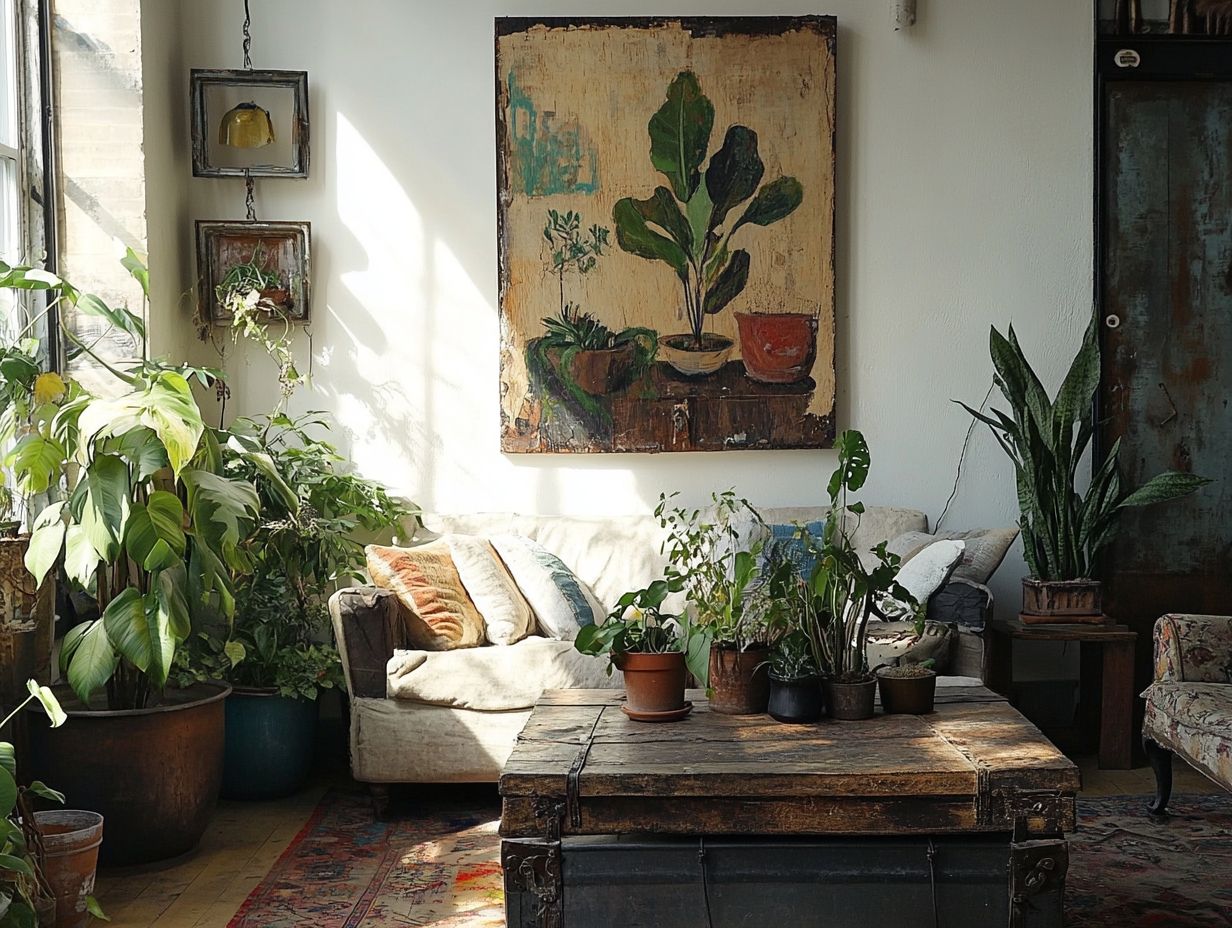
Salvaged materials are a sustainable and cost-effective option for home design. They offer unique aesthetic opportunities.
Knowing where to find these materials and considering aspects like quality and compatibility are essential for successful selection.
You can create unique furniture and stylish accents with salvaged materials.
What are Salvaged Materials?
Salvaged materials are hidden gems sourced from the careful deconstruction of former structures, often found during demolition projects.
By integrating these reclaimed materials into your new construction, you minimize waste and champion sustainability, opting for eco-friendly alternatives to conventional building supplies.
These materials include different types, from reclaimed wood sourced from old barns to recycled metals and glass, each with its own captivating story.
Choosing salvaged resources breathes new life into forgotten items while contributing to energy-efficient homes, meaning they use less energy to keep you comfortable.
Utilizing these materials enhances insulation and reduces energy consumption, leading to lower utility bills and a smaller carbon footprint.
Incorporating sustainable options into your housing projects allows you to preserve the environment while crafting unique, character-rich living spaces that tell a story.
Benefits of Using Salvaged Materials in Homes
Incorporating salvaged materials into your home design provides many benefits, especially for sustainable and energy-efficient living.
Focusing on minimizing your environmental footprint enhances the aesthetic appeal of your space while making creative use of valuable materials that would otherwise become waste.
This approach allows you to blend sustainability with innovative design, resulting in a home that reflects your values and unique style.
Cost-Effective and Sustainable Options
Salvaged materials offer cost-effective and sustainable solutions, minimizing construction waste while maintaining the highest quality standards.
Many case studies reveal the financial benefits of integrating reclaimed resources, with homeowners reporting savings of up to 30% on material costs.
For example, consider a recent project by eco-friendly builders who used reclaimed wood from a deconstructed barn. This choice elevated the home’s aesthetic charm and significantly reduced expenses.
Testimonials from builders emphasize not only cost savings but also the positive environmental impact of diverting materials from landfills, promoting a more sustainable construction approach.
Embracing salvaged materials invites creativity and uniqueness into your designs, helping your projects stand out in today’s competitive market.
Unique Aesthetic and Design Opportunities
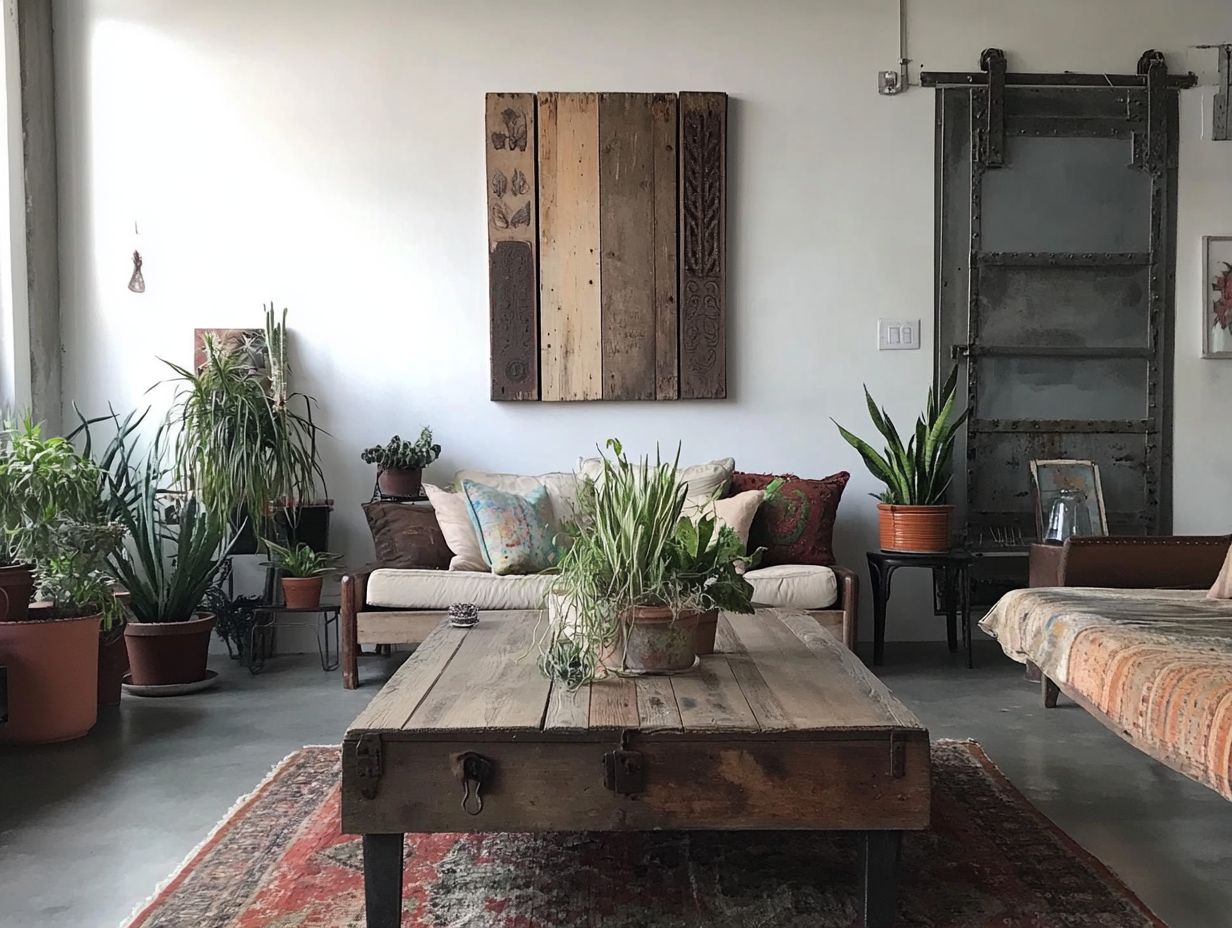
Incorporating salvaged wood and other reclaimed materials into your home design unlocks a treasure trove of design options. These materials infuse your space with character and history that new materials often miss. This not only champions sustainability but also reflects your individuality and creativity, elevating your design style to new heights.
For example, in rustic designs, aged barn wood can transform into stunning accent walls or ceiling beams that radiate warmth and charm. On the flip side, industrial styles thrive on salvaged metal fixtures and piping, delivering a raw, edgy vibe that s hard to replicate.
Even contemporary designs can benefit from elements like reclaimed marble countertops. This harmonizes modern minimalism with timeless charm. These materials are also very versatile, inviting you to explore innovative solutions that enhance both visual appeal and functionality in any secondhand build.
How to Source and Select Salvaged Materials
Sourcing and selecting salvaged materials requires a keen understanding of where to discover these invaluable resources. Local suppliers like Community Forklift are excellent options.
It’s essential to weigh factors like quality, historical significance, and any potential liability concerns that may emerge during your construction projects. Each decision you make plays a crucial role in ensuring a successful and responsible build.
Where to Find Salvaged Materials
Embarking on the quest for salvaged materials can be quite the thrilling adventure. Local suppliers like Community Forklift and various online marketplaces present an impressive array of materials perfect for your construction and renovation projects.
As you explore these options, you’ll uncover unique items brimming with character while promoting environmental sustainability. Don t miss out on Community Forklift and check out Habitat for Humanity ReStores, which can be found in many cities. They offer furniture, fixtures, and building materials at exceptional prices.
Consider also online platforms like Craigslist, eBay, and Etsy s vintage section, which showcase salvaged goods and connect you with sellers from across the nation. While you re shopping, make sure to inspect items for quality and safety.
By supporting local businesses, you contribute to community development and minimize shipping footprints. This makes your renovation efforts not just stylish, but also socially responsible.
Factors to Consider When Choosing Materials
When selecting salvaged materials for your construction project, it s essential to weigh several factors. These include quality, historical significance, and potential liability issues that could impact the integrity of your build.
Understanding the history of these materials is key; it offers valuable insights into their durability and previous applications, which can significantly affect their performance in your new project. Make sure to check where your materials come from to ensure compliance with local regulations and avoid legal issues related to theft or environmental concerns.
Evaluating the structural integrity checking for rot, corrosion, or damage is crucial as well. This thorough assessment will determine the long-term viability of your build, making it critical for a successful renovation or construction endeavor.
Innovative Uses for Salvaged Materials in Homes

Innovative uses for salvaged materials in homes are gaining significant traction. Homeowners and designers alike recognize the immense potential of recycled materials for home upgrades.
By incorporating salvaged materials, you can craft distinctive interior finishes and design elements that not only showcase your creativity but also align with your sustainability goals. This approach allows you to elevate your space while making a positive impact on the environment.
Creative Ideas and Inspiration
When you consider incorporating salvaged materials into your home design, you’ll discover many creative ideas. This journey encourages you to embrace a sustainable housing ethos while enhancing your space with unique elements.
Imagine repurposed wood beams that infuse warmth and character into your home or upcycled metal furnishings that bring an industrial flair to your decor. The possibilities are endless!
You can find visual examples everywhere, showcasing stunning transformations that celebrate the beauty of imperfect materials. Inspirational stories from individuals who have crafted breathtaking homes from reclaimed treasures serve as powerful motivators for your own endeavors.
Each project reflects artistic vision and underscores the significance of environmental consciousness in modern living. By adopting these practices, you join a broader movement toward sustainability, contributing to a more thoughtful and eco-friendly approach to design.
Tips for Incorporating Salvaged Materials into Home Design
Incorporating salvaged materials into your home design demands careful planning and execution. By following best practices, you can seamlessly integrate these unique resources while elevating the overall creativity of your space. Start exploring your local salvage yards today!
Design Considerations and Best Practices
When incorporating salvaged materials into your home design, it s essential to consider both functionality and aesthetics. You want these materials to look stunning and work well!
Striking the right balance takes a thoughtful approach. Evaluate how these materials can seamlessly integrate into your overall design vision. Remember, salvaged items may not always comply with current building codes, so verifying their quality and safety is crucial.
Embracing the potential challenges of using reclaimed wood or vintage fixtures can pave the way for inventive solutions. This way, you ll create a home that is not just stylish but also sustainable.
Frequently Asked Questions
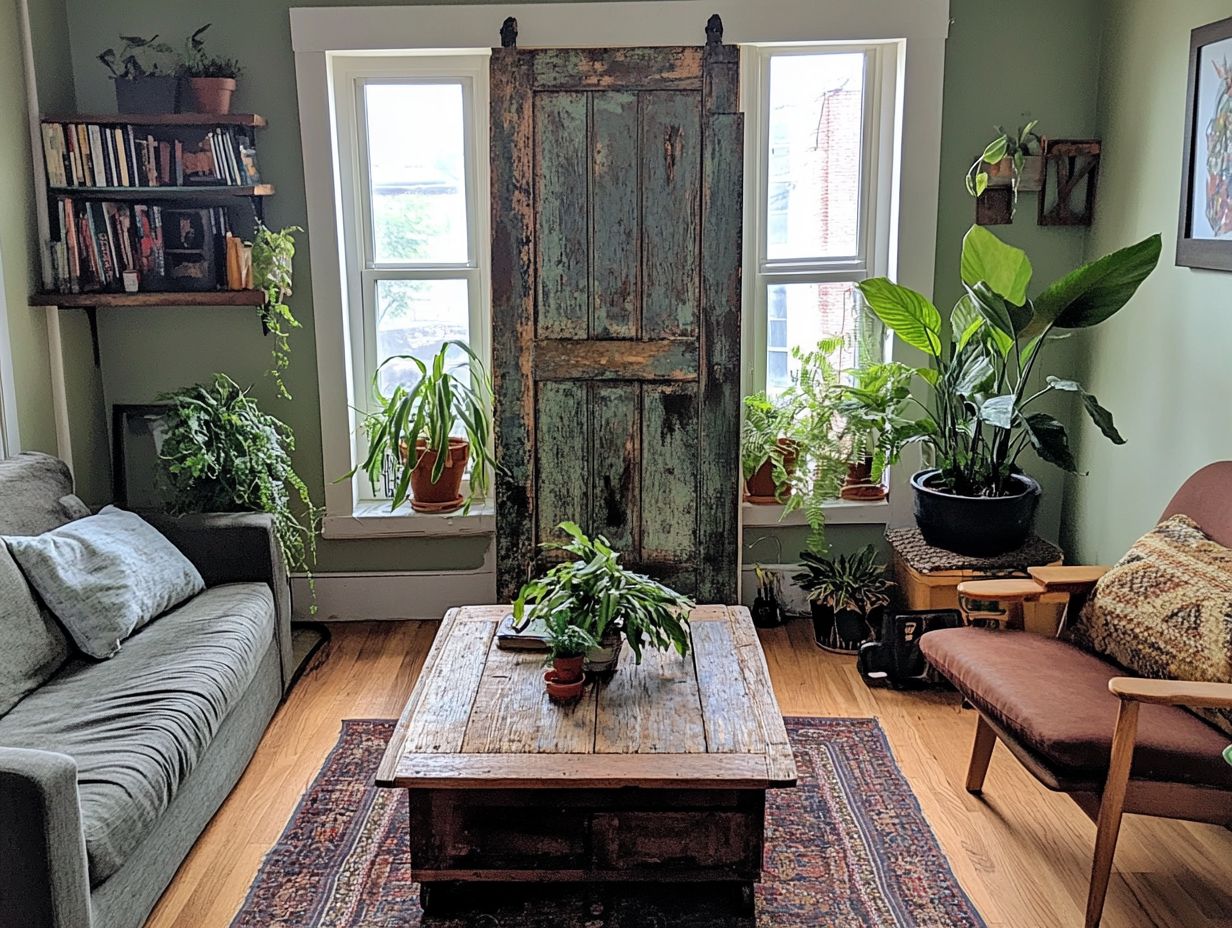
Here are some frequently asked questions about using salvaged materials in home design.
What are some examples of innovative uses for salvaged materials in homes?
Some examples include using old doors as dining tables, turning pallets into outdoor furniture, and repurposing old windows as picture frames.
How can using salvaged materials in homes be beneficial?
Using salvaged materials can be environmentally friendly and cost-effective. It also adds unique character and charm to a home.
What types of materials can be salvaged and used in homes?
Many materials can be salvaged and repurposed, such as wood, metal, glass, and even old furniture pieces.
Are there any limitations to using salvaged materials in homes?
There may be limitations in finding specific materials or ensuring their safety and durability. It’s important to research and properly prepare salvaged materials before using them in a home.
How can I incorporate salvaged materials in a modern home design?
Salvaged materials can add an interesting contrast to modern home designs. Consider using them as accent pieces or incorporating them into minimalist furniture designs.
Are there certain salvaged materials that are better suited for specific home projects?
Some salvaged materials may be better suited for certain projects, such as using old bricks for a fireplace or reclaimed wood for a kitchen countertop. It’s important to consider the functionality and durability of the materials for each project.


